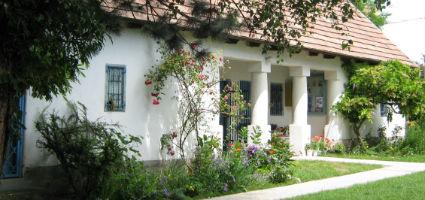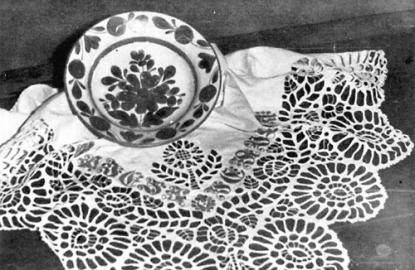2026. January 16. Friday
Village Museum, Nagytarcsa - Nagytarcsa
 |
Address: 2142, Nagytarcsa Múzeumkert u. 21.
Phone number: (70) 379-8262
Opening hours: Tue-Wed 10-16, Thu-Fri 10-14
|
Museum tickets, service costs:
|
Ticket for adults
|
250 HUF
|
|
|
Ticket for students
(Hungarian)
|
100 HUF
|
|
|
Ticket for pensioners
(Hungarian)
|
100 HUF
|
The women costume of Nagytarcsa is very similar to those of Cinkota and Csömör. Its patterns are similar to the embroideries found around Pest.

Their embroidery technology was characterized by one colour. Only later did they stitch the red together with the blue. The ornamentation and arts of the local people were developed during the course of time. In the 1920'ies the sleeves of the shirts and the ironed kerchieves began to be ornamented by white hole embroidery.
According to the testimony of the photographs the skirts of the women gradually got shorter and finally reached at just about the knees. In order to shape their lines they put on either more or fewer skirts.
The older girls' festive costume could be worn by the young wives up to the birth of the first child. They wore the blue on the first day of the feast, and the white on the second. The ironed kerchieves could only be worn by the engaded girls when going to the church. Otherwise they could only appear without it. The hair of the girls were hanging in one ponytail.
The women could wear the red costume at pentecost, and the black one on funeral ceremonies. In case of close relatives this costume had to be embroideried by thinner and darker silk. Only a very thin lace could be shown off the women's bonnets.
A dressed puppet - wearing a fur coat - represents the men's costume. This coat was only worn on carriages, but at the turn of the century they started wearing it when going to church, too. Underneath the coat there is an embroydered shirt, a waistcoat and on the head of the puppet there is a hut.

Their embroidery technology was characterized by one colour. Only later did they stitch the red together with the blue. The ornamentation and arts of the local people were developed during the course of time. In the 1920'ies the sleeves of the shirts and the ironed kerchieves began to be ornamented by white hole embroidery.
According to the testimony of the photographs the skirts of the women gradually got shorter and finally reached at just about the knees. In order to shape their lines they put on either more or fewer skirts.
The older girls' festive costume could be worn by the young wives up to the birth of the first child. They wore the blue on the first day of the feast, and the white on the second. The ironed kerchieves could only be worn by the engaded girls when going to the church. Otherwise they could only appear without it. The hair of the girls were hanging in one ponytail.
The women could wear the red costume at pentecost, and the black one on funeral ceremonies. In case of close relatives this costume had to be embroideried by thinner and darker silk. Only a very thin lace could be shown off the women's bonnets.
A dressed puppet - wearing a fur coat - represents the men's costume. This coat was only worn on carriages, but at the turn of the century they started wearing it when going to church, too. Underneath the coat there is an embroydered shirt, a waistcoat and on the head of the puppet there is a hut.
